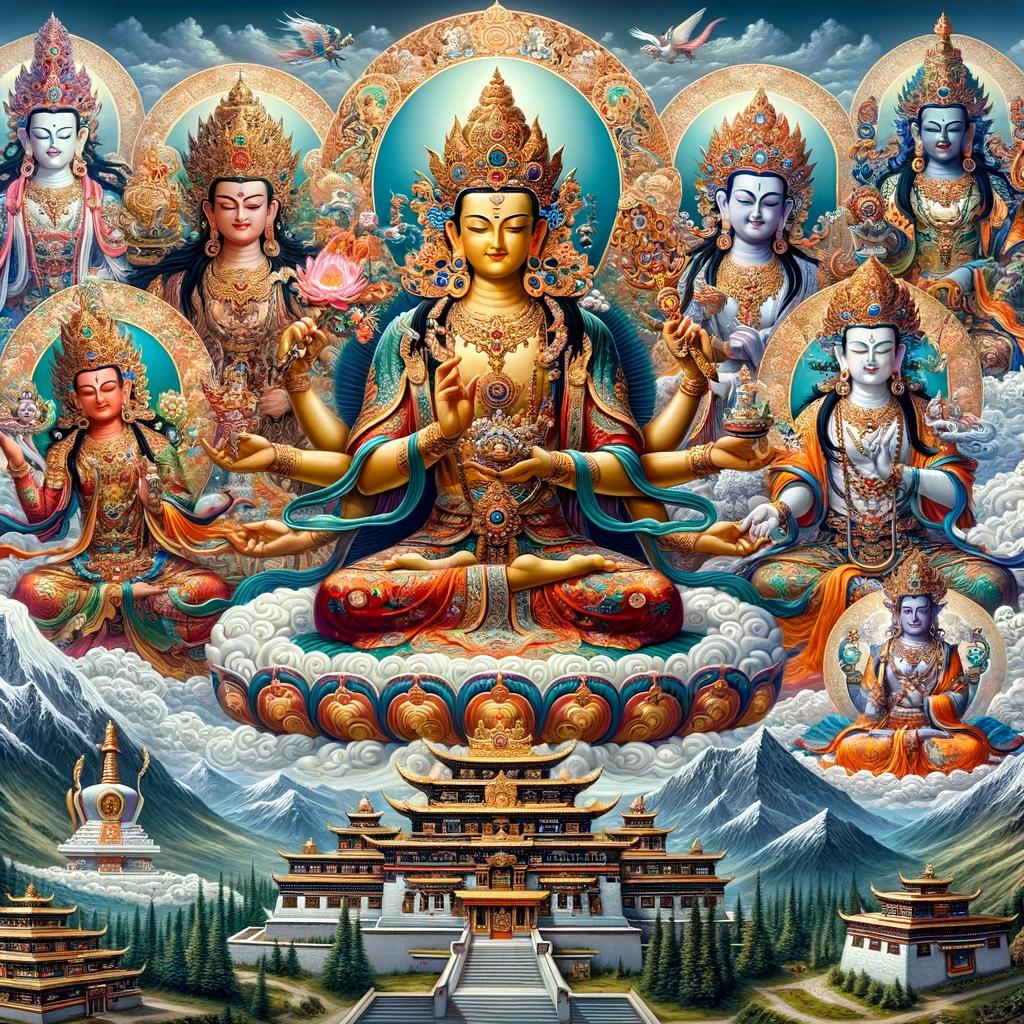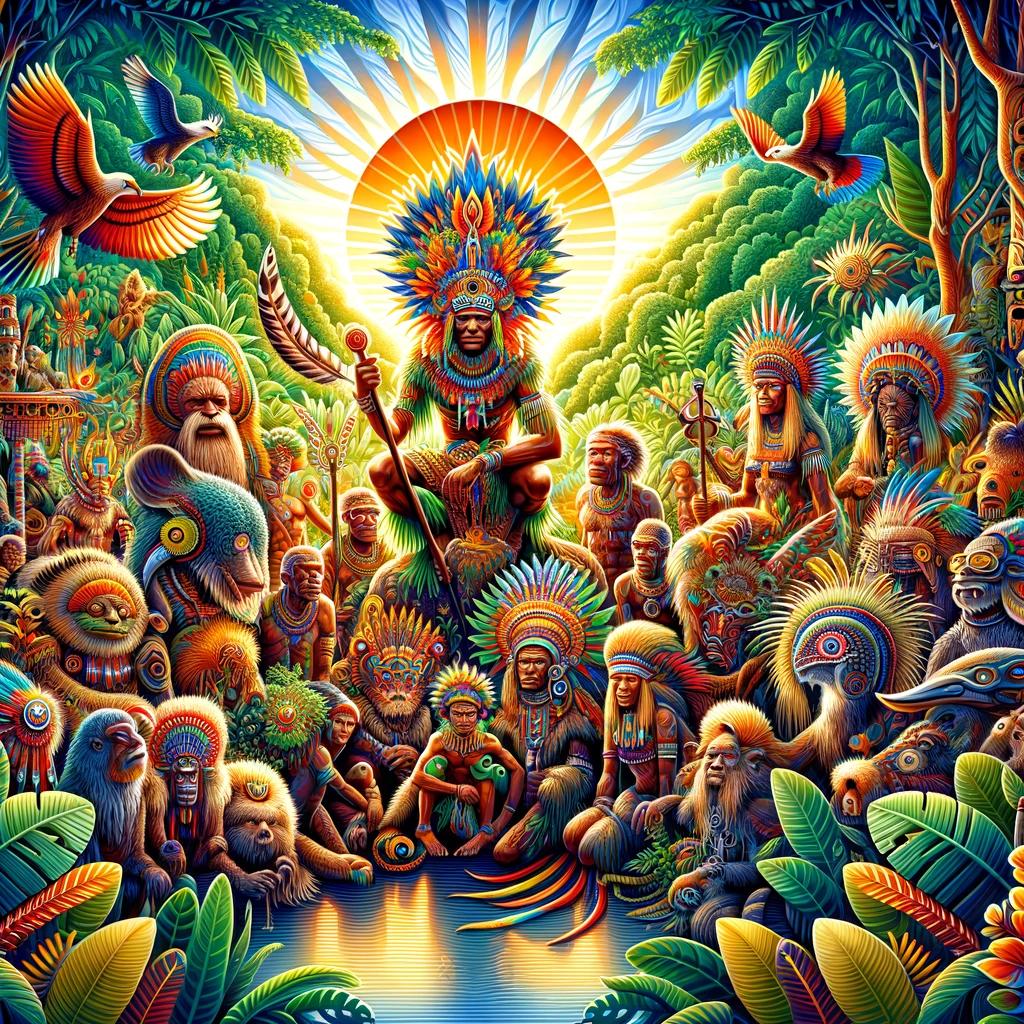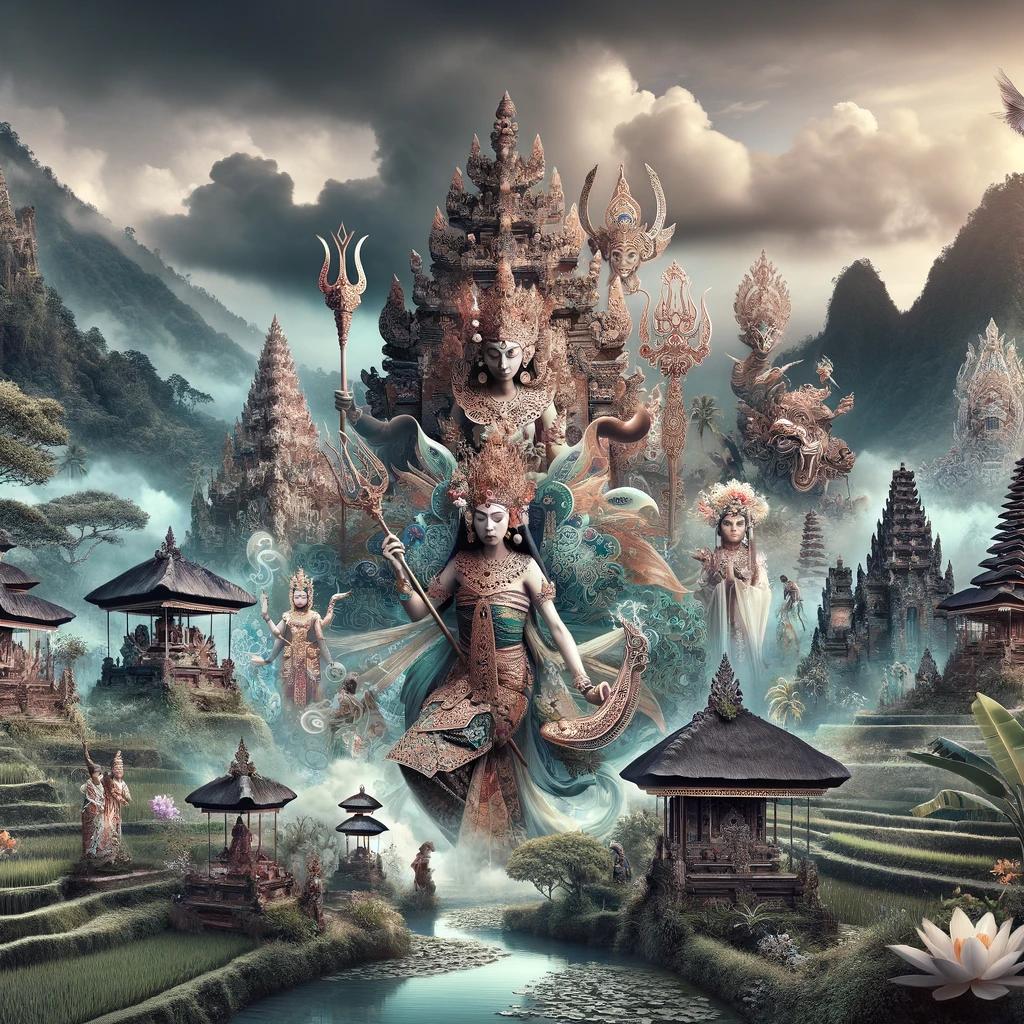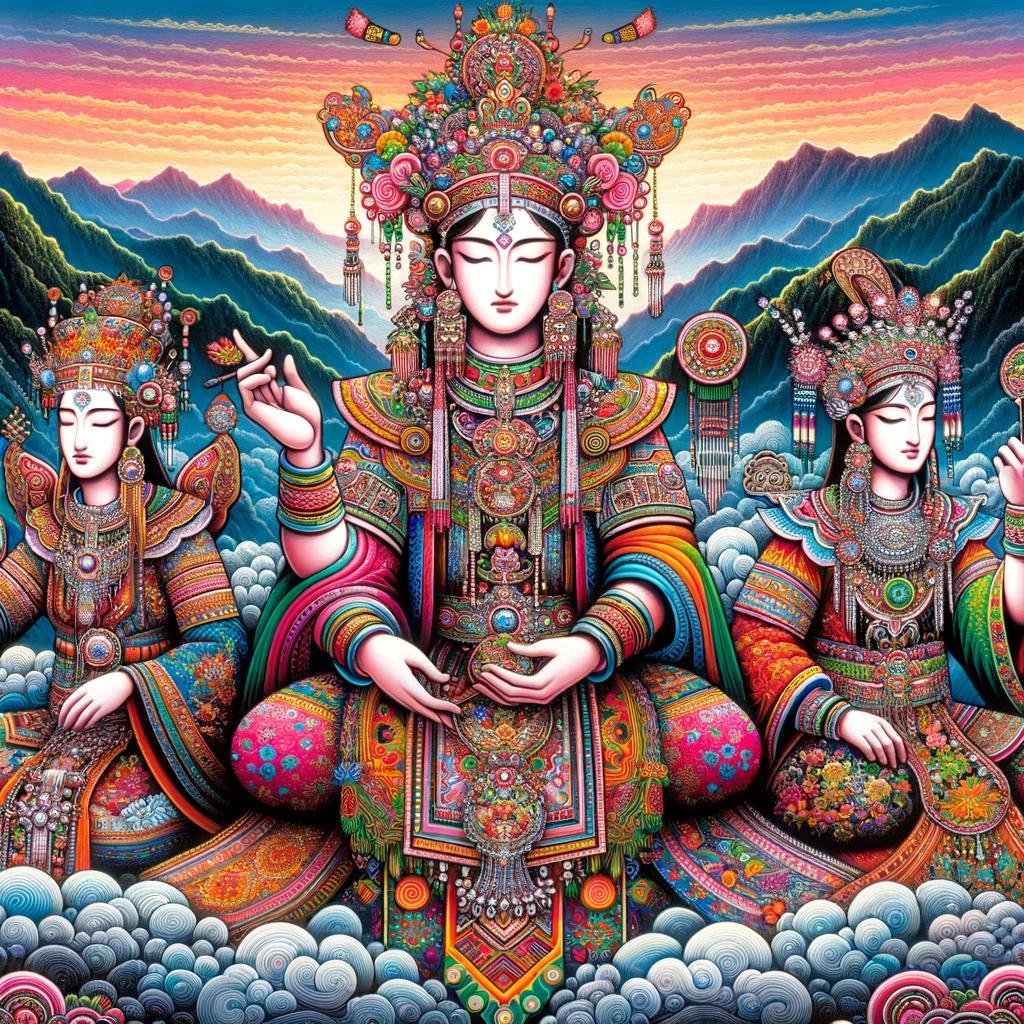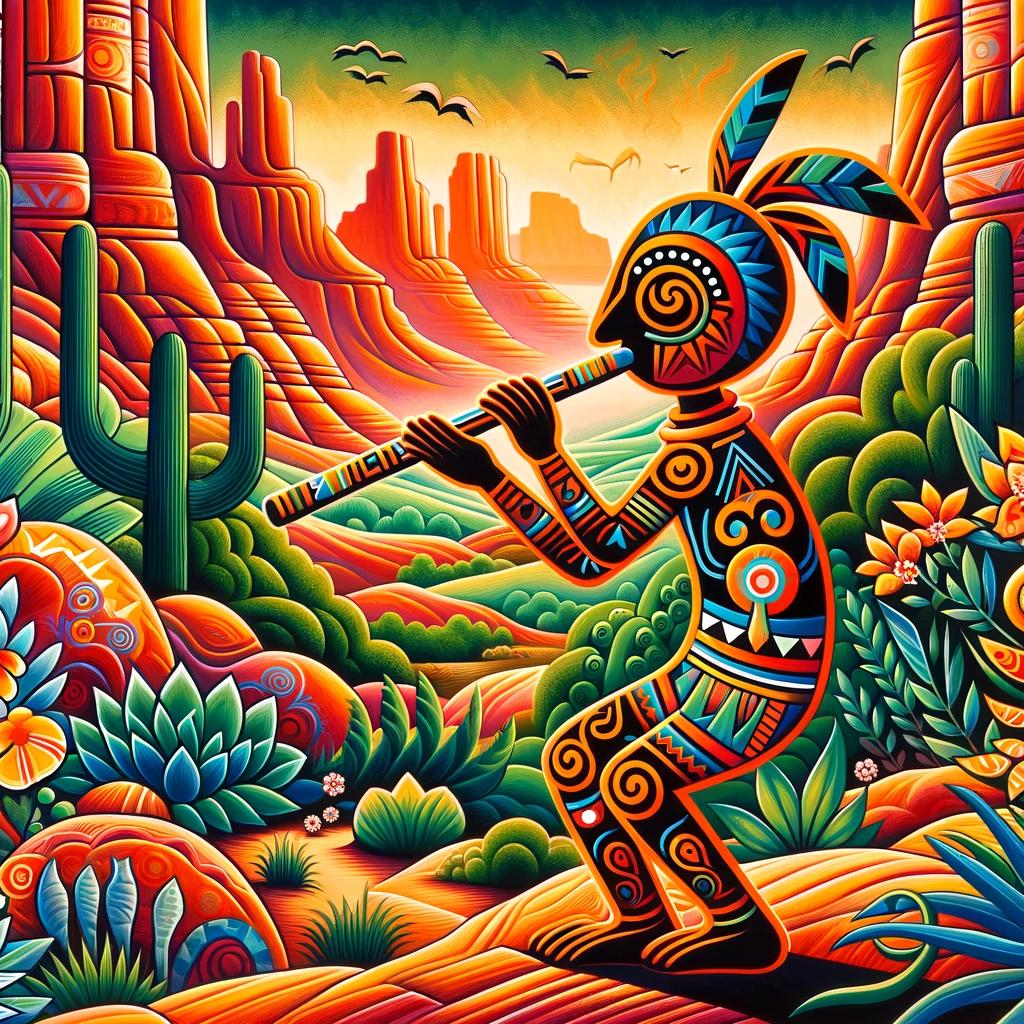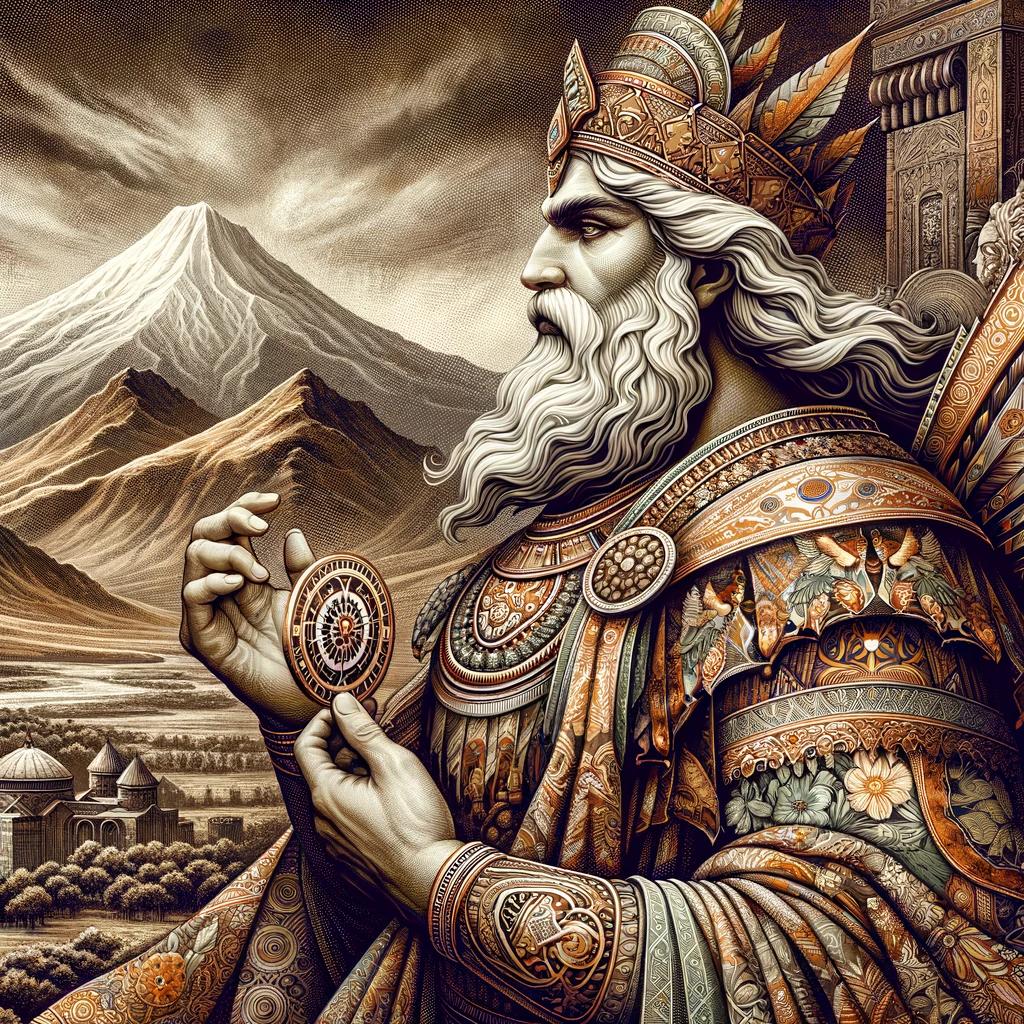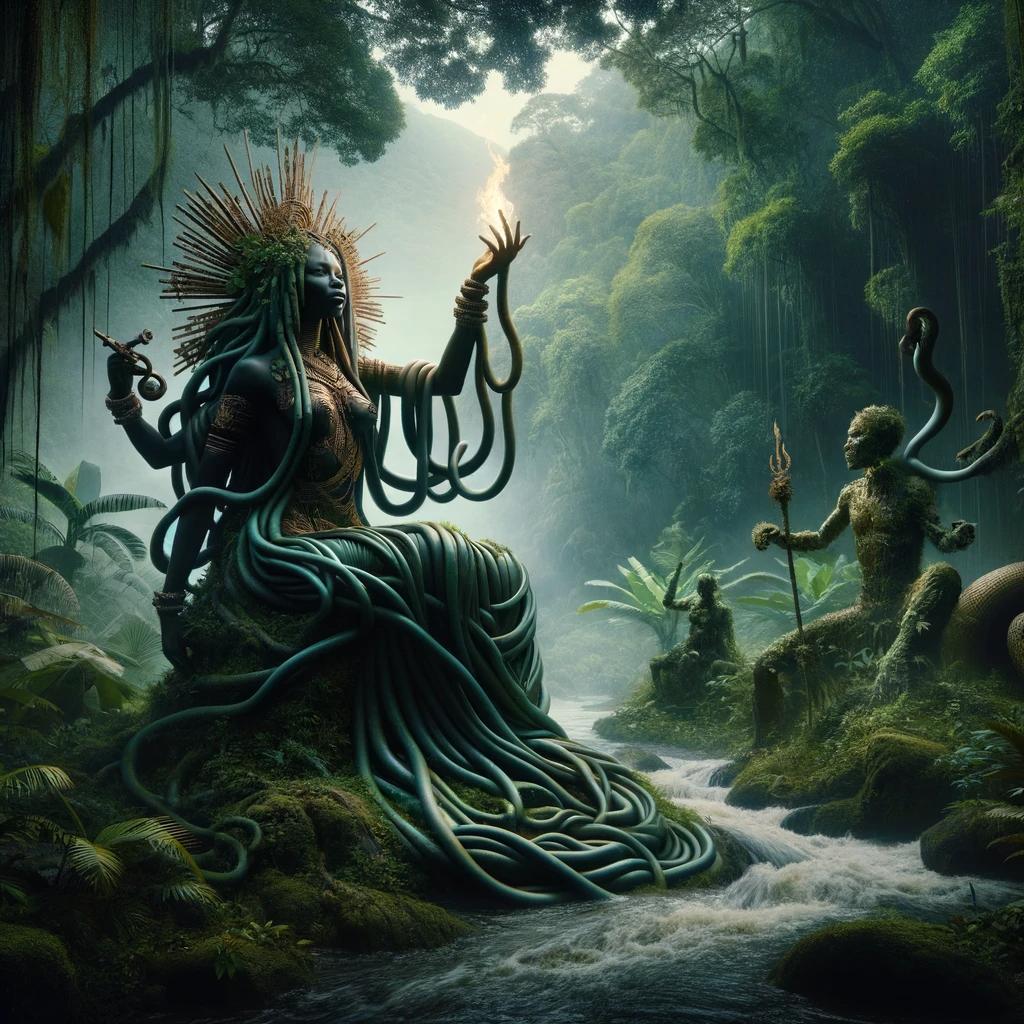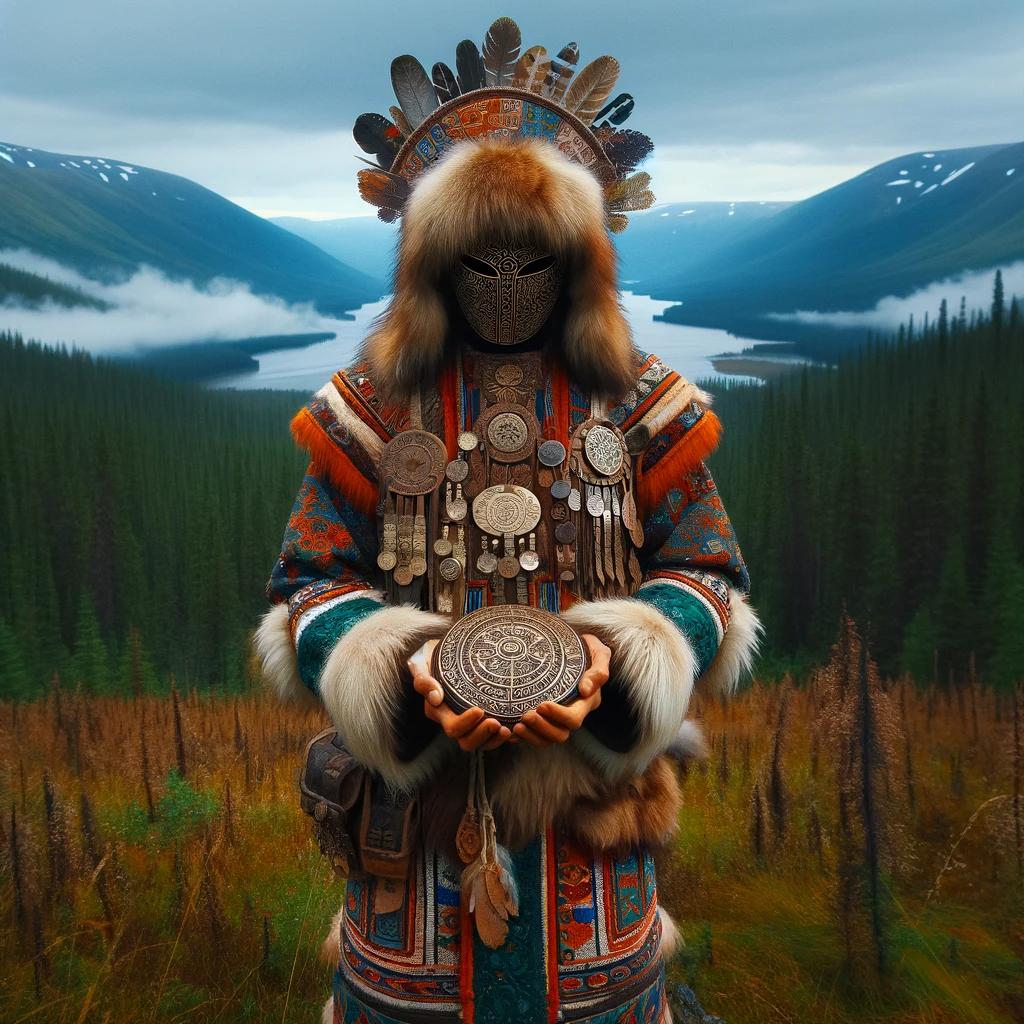Tibetan Mythology Gods and Goddesses: Divine Tales and Mystical Beings Unveiled
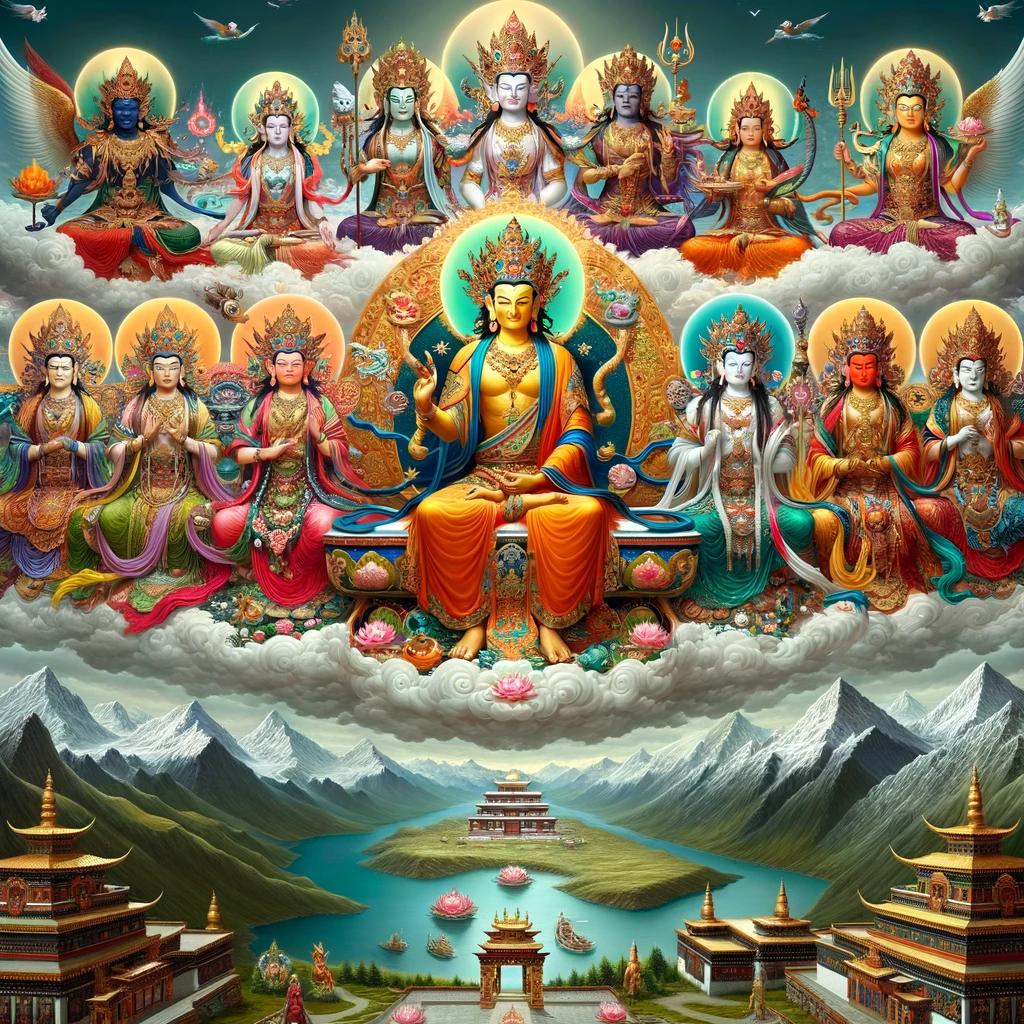
Tibetan mythology is a fascinating tradition filled with gods, goddesses, and mythic creatures. Influenced by Buddhism, the pantheon includes revered figures such as the Buddha Sakyamuni, the bodhisattvas Mañjuśrī and Avalokiteśvara, and the compassionate goddess Tara.
Deities like Mahakala and Palden Lhamo serve as protectors of the teachings, while mythical beings like the enigmatic Yeti and the magical Snow Lion add to the mystique. With rich rituals, vibrant artwork, and profound cultural significance, Tibetan mythology continues to captivate and inspire.
In this article, we delve into the origins, key figures, rituals, and cultural impact of Tibetan mythology.
Origins and History of Tibetan Mythology
Tibetan mythology has its roots in the unique cultural and religious heritage of the Tibetan people. It is intricately intertwined with the influence of Buddhism, which played a significant role in shaping and developing the mythology over the centuries.
Influence of Buddhism on Tibetan Mythology
Buddhism’s entry into Tibet began in the 7th century, introduced by the legendary King Songtsen Gampo. With the spread of Buddhism, the pre-existing Bon religion of Tibet blended and intermingled with Buddhist teachings, resulting in a unique syncretic tradition.
Buddhism brought with it a vast array of deities, rituals, and mythological figures, which became assimilated into the existing Tibetan belief system. The influence of Buddhism on Tibetan mythology introduced new gods, goddesses, and divine beings, while also transforming the existing Bon deities into Buddhist deities.
Development of Tibetan Gods and Goddesses
The development of Tibetan gods and goddesses can be traced through the evolution of the religion and the interaction with neighboring cultures. These deities often embody different aspects of nature, wisdom, compassion, and divine power.
As time progressed, various regional or local deities gained prominence, gaining reverence and establishing their place in Tibetan mythology. These local deities were often associated with specific geographic features, such as mountains, rivers, or lakes.
With the assimilation of Buddhism, many of these local deities were absorbed into the Buddhist pantheon or took on new roles within the mythology. This process resulted in a rich and diverse range of gods and goddesses in Tibetan mythology, each with their unique attributes, symbols, and stories.
Key Gods and Goddesses in Tibetan Mythology
In Tibetan mythology, the pantheon includes an array of revered deities, each associated with unique qualities and symbolism. This section explores the prominent figures among the gods and goddesses in Tibetan mythology.
The Buddha and Bodhisattvas
Buda Sakyamuni: The Historical Buddha
Buda Sakyamuni, also known as the historical Buddha, is highly esteemed in the Tibetan Buddhist tradition. He attained complete enlightenment and is revered as the founder of Buddhism. His teachings, which encompass the Four Noble Truths, guide practitioners on the path to awakening.
Maitreya and Amitābha: Buddhas of Pure Lands
In Mahayana Buddhism, Maitreya and Amitābha are revered as Buddhas of Pure Lands. Maitreya is believed to be the future Buddha who will appear in a time of righteousness, while Amitābha presides over Sukhavati, a heavenly realm where devotees can be reborn after death.
Tara: The Compassionate Goddess
Green Tara: Goddess of Activity and Protection
Green Tara is a prominent goddess associated with dynamic energy and protection. She swiftly responds to the prayers of her devotees, offering assistance and shielding them from harm. Many seek her blessings for overcoming obstacles and achieving success in their endeavors.
White Tara: Goddess of Compassion and Healing
White Tara embodies compassion, longevity, and healing. She is revered for her ability to bestow blessings of physical and spiritual well-being. Many turn to her for support in times of illness or distress, seeking her compassionate guidance and rejuvenating energies.
Deities and Protectors
Mahakala: The Wrathful Deity
Mahakala symbolizes the fierce aspect of compassion. As a powerful protector deity, he eliminates obstacles and protects the dharma, the teachings of Buddhism. With his wrathful appearance, Mahakala inspires devotion and offers guidance on the path to enlightenment.
Palden Lhamo: Guardian of the Dharma
Palden Lhamo is a formidable female deity who serves as the guardian of the dharma. She embodies fierce determination and wisdom, protecting the teachings of Buddhism from threats. Devotees seek her blessings to overcome obstacles and to cultivate inner strength on their spiritual journey.
Dorje Shugden: Protector of the Gelug School
Dorje Shugden is a revered protector deity associated specifically with the Gelug school of Tibetan Buddhism. Considered an enlightened being, Dorje Shugden safeguards the teachings and offers support to practitioners in their pursuit of spiritual growth.
This section highlights only a selection of the key gods and goddesses in Tibetan mythology. Each figure holds deep spiritual significance and serves as a source of inspiration, protection, and guidance for devotees.
Mythical Creatures in Tibetan Mythology
Mythical creatures hold a significant place in Tibetan mythology, adding to its mystical allure. Two prominent creatures featured are the Yeti and the Snow Lion, each with their own legends and symbolism.
Yeti: The Enigmatic Snowman
The Yeti, also known as the Abominable Snowman, is a creature of folklore and fascination. It is said to roam the snowy peaks of the Himalayas, often depicted as an ape-like figure covered in shaggy fur.
Accounts of sightings have perpetuated the mystery surrounding this elusive being, captivating explorers and researchers alike. The Yeti remains a subject of intrigue, their existence still debated and explored.
Snow Lion: The Magical Guardian
The Snow Lion, a mystical creature, is regarded as a guardian and protector in Tibetan mythology.
Portrayed as a lion-like creature with a snowy white coat, it represents strength, fearlessness, and wisdom. The Snow Lion is associated with the mountainous regions of Tibet, symbolizing the power and purity of the snowy peaks.
It embodies grace and majesty, often depicted alongside important figures in Tibetan iconography.
These mythical creatures of Tibetan mythology contribute to the rich tapestry of its legends, captivating the imagination and enticing further exploration into the enchanting world of Tibetan folklore.
Rituals and Practices in Tibetan Mythology
The rituals and practices in Tibetan mythology play a vital role in connecting devotees with the gods and goddesses of this rich tradition. These practices are deeply rooted in the beliefs and teachings of Buddhism, integrating symbolism, mantras, and meditation to cultivate spiritual growth and attain enlightenment.
Veneration and Worship of Gods and Goddesses
Veneration and worship are central to Tibetan mythology, as devotees express their devotion and seek blessings from the revered gods and goddesses. Through prayers, offerings, and prostrations, devotees show their reverence and gratitude.
Temples and monasteries serve as sacred spaces where rituals are performed, fostering a spiritual connection between the human realm and the divine.
Tibetan Incense and its Sacred Significance
Tibetan incense holds deep sacred significance in Tibetan mythology. It is believed that the fragrance of incense carries prayers and offerings to the celestial realm, creating a bridge between the earthly and divine realms.
The burning of incense is considered a purification ritual, cleansing the surroundings and purifying the minds of devotees during worship and meditation.
Tantric Buddhism and its Role in Mythology
Tantric Buddhism, also known as Vajrayana, has a significant role in Tibetan mythology. It employs rituals, visualizations, and meditative practices to explore and harness the transformative powers of the mind. Tantric rituals involve the recitation of mantras, the visualization of deities, and the practice of complex mudras and visualizations, aiming to awaken the enlightened qualities within individuals and empower them on their spiritual journey.
Cultural Significance and Influence of Tibetan Mythology
Tibetan Mythology in Art and Literature
Tibetan mythology has had a profound impact on art and literature, weaving its divine tales and mythical beings into the cultural fabric of the region. Artists and writers have drawn inspiration from the gods, goddesses, and creatures of Tibetan mythology, creating stunning works that capture the essence of this ancient tradition.
Through intricately crafted thangka paintings, sculptures, and tapestries, Tibetan mythology comes to life, inviting viewers into a world filled with spiritual symbolism and mystical narratives.
The literary world has also been enriched by Tibetan mythology, with numerous poems, stories, and epics capturing the essence of these divine tales.
Writers have explored themes of enlightenment, compassion, and the eternal struggle between good and evil, drawing readers into a mythical realm where gods and goddesses shape destinies and guide mortal souls.
Tibetan mythology’s influence on art and literature transcends boundaries, captivating audiences around the world who seek to uncover the wisdom and beauty embedded within these ancient stories.
Impact of Tibetan Mythology on Tibetan Culture
In Tibet, mythology is deeply intertwined with daily life, shaping religious practices, rituals, and social norms.
The gods and goddesses of Tibetan mythology are not merely distant figures of worship but are seen as active forces in the lives of individuals and communities. They inspire devotion, guide ethical behavior, and provide spiritual solace amidst life’s challenges.
Tibetan mythology also influences various cultural aspects, such as music, dance, and traditional ceremonies. Chants, rituals, and sacred dances are performed to honor the gods and goddesses, celebrating their presence and seeking their blessings.
Festivals and pilgrimages held throughout the year serve as a reminder of the enduring significance of Tibetan mythology in the lives of the Tibetan people.
Moreover, the influence of Tibetan mythology extends to the realms of medicine, astrology, and divination.
Traditional healing practices often incorporate spiritual rituals and invocations to deities, fostering a holistic approach to well-being. Tibetan astrology, based on the cosmic influence of the gods and goddesses, guides important decisions and provides insights into one’s destiny.
In essence, Tibetan mythology’s impact on Tibetan culture is immeasurable. It shapes beliefs, rituals, and cultural expressions, infusing daily life with a sense of the divine and connecting individuals to the rich spiritual heritage of their ancestors.
Modern Perceptions and Practices of Tibetan Mythology
Tibetan mythology continues to captivate modern audiences, shaping the way people perceive and engage with its rich traditions.
Let’s explore two key aspects in the contemporary context: popular Tibetan Mythology tours and travel, and contemporary interpretations of Tibetan gods and goddesses.
Popular Tibetan Mythology Tours and Travel
Many individuals, both locals and tourists, seek to immerse themselves in the realm of Tibetan mythology through organized tours and travel experiences. These journeys provide an opportunity to discover the spiritual and cultural aspects of Tibetan mythology in a tangible way.
During these tours, participants can visit sacred sites, monasteries, and temples where rituals, prayers, and offerings to gods and goddesses take place. Experienced guides provide insights into the mythological significance of each site, allowing visitors to gain a deeper understanding of the gods, goddesses, and mythical creatures of Tibetan mythology.
Contemporary Interpretations of Tibetan Gods and Goddesses
In modern times, Tibetan mythology has also experienced reinterpretations and adaptations in various art forms and popular culture. Artists, writers, and filmmakers explore the fascinating realm of Tibetan gods and goddesses, infusing their own interpretations and expressions into their works.
Contemporary art exhibits showcase stunning depictions of Tibetan deities, capturing their divine energy and symbolism through various mediums. Books, novels, and graphic novels delve into the captivating stories and legends of Tibetan gods and goddesses, introducing them to wider audiences.
The film industry has also embraced Tibetan mythology, creating movies and documentaries that bring these divine beings to life on the big screen. These visual adaptations allow viewers to appreciate and connect with the mythical world of Tibetan gods and goddesses in a modern context.
- Contemporary art exhibits showcase stunning depictions of Tibetan deities.
- Books, novels, and graphic novels delve into the captivating stories and legends of Tibetan gods and goddesses.
- The film industry creates movies and documentaries that bring these divine beings to life on the big screen.
These modern interpretations of Tibetan gods and goddesses not only provide new perspectives but also contribute to the preservation and promotion of Tibetan mythology, ensuring that its rich traditions continue to inspire and fascinate future generations.
.

